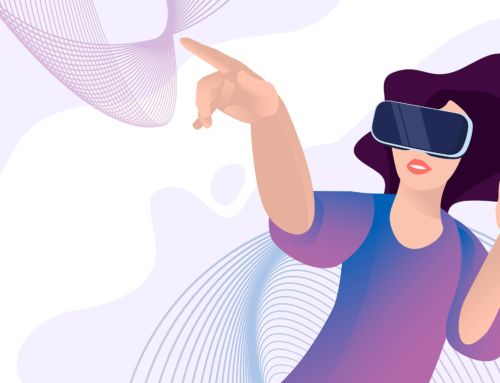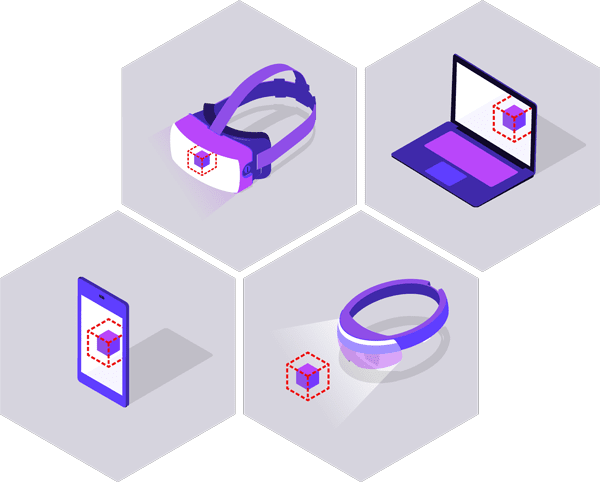Let’s face it: corporate training isn’t cheap. So when scientific research shows 70% of new information is forgotten by employees within 24 hours, it’s enough to keep any business owner turning in their sleep.
Of course, as a business owner who wants to see value from your training budget, you need to bridge the gap between delivery and retention. But what’s the answer? How can you make learners remember new information?
Grab a chair because we’re about to lift the lid on five simple strategies proven to support learner retention.
Why learning retention is important
Whether you’re training through traditional methods, online tools or with virtual reality (VR) technology, training employees is always focused on a shared single outcome: to upskill subjects with new information.
But teaching new information in an engaging, receptive and understandable way is only half the battle! It also needs to be delivered in a fashion where content is more likely to be retained and recalled when required.
In his experimental study, the “Forgetting Curve”, 19th-century German psychologist, Hermann Ebbinghaus, focused on how quickly we typically forget newly learned information.
His findings demonstrated just how rapidly information seeps out of our brains. Within 20 minutes, Hermann had forgotten 60% of what he’d just processed. And within a month, he’d forgotten 90% of all new information.
That’s a lot of content!
Hermann’s findings have since been backed up by neuroscientists who suggest our brains operate a strict ‘use-it-or-lose-it’ policy when it comes to newly stored information.
In a corporate context, this is hugely counterproductive. Because if employers truly want to see results from their training budget, they need to have confidence new information is sticking in brains.
So, without further ado, let’s look at some strategies to reset the forgetting curve once and for all.
Strategies to improve employee learning retention
Retaining learning is like watering a plant: if you don’t repeat the act regularly, it’s not going to last. If you really want information to grow strong and healthy roots, you need to follow up on first discovery with these retainment-boosting strategies.
-
Revisit material
Creating a learning schedule to review newly taught information at different times and at different intervals has proven to strengthen recall, re-engagement and retainment.
Moreover, neuroscience research suggests you should revisit information at least three times from initial learning. So, if this is your first time here, maybe you should bookmark this post for a future read?
-
Reduce distractions
This one goes without saying, but we thought we’d include it anyway. Get rid of distractions!
Of course, we all learn in different ways. Where some may require silence, others might prefer forgettable background music.
In some learning environments, such as a traditional classroom, you might find some distractions are out of your control. It’s one of the reasons why many employers are now including VR in their training programmes.
As well as the high levels of engagement, its immersive qualities means there is no room for any distraction from the real world.
-
Differentiate content delivery
A droning and didactic delivery isn’t the preferred learning method for everyone. In fact, if you ask us, it’s a sure-fire way to quickly lose the attention of the whole class.
That’s why the stickiest content is the type delivered in a way that resonates with the learner, differentiated in a way that resonates with their preferred learning style.
It means content becomes easily accessible, understood and more likely to be remembered from the offset.
-
Make information meaningful
If learners can see the value in what they’re learning, they’re far more likely to increase focus, commitment and engagement with the training plan.
One way this can be achieved is through contextualisation activities, such as role play, where learners can immediately implement new skills relevant to their roles.
If you don’t have the training space available for elaborate role plays – or if your team works remotely – it’s worth taking a look at VR alternatives.
It’s easy to use, cost effective and doesn’t require a dedicated training room.
-
Practise whole and part learning
Even to the most determined learners, memorising a whole module in one sitting can seem a little daunting.
That’s why we suggest breaking down information into manageable chunks. It gives your hard-working brain a better chance of retaining and it also allows for a more holistic understanding of the given information.
For example, trainee mechanics would benefit from an atomised focus of specific engine components before piecing their learning together to gain a holistic understanding.
Slow and steady wins the race.
Want to see your training budget win higher levels of engagement, satisfaction and retainment? Speak with us today to learn what benefits VR can bring to your business.
Let’s face it: corporate training isn’t cheap. So when scientific research shows 70% of new information is forgotten by employees within 24 hours, it’s enough to keep any business owner turning in their sleep.
Of course, as a business owner who wants to see value from your training budget, you need to bridge the gap between delivery and retention. But what’s the answer? How can you make learners remember new information?
Grab a chair because we’re about to lift the lid on five simple strategies proven to support learner retention.
Why learning retention is important
Whether you’re training through traditional methods, online tools or with virtual reality (VR) technology, training employees is always focused on a shared single outcome: to upskill subjects with new information.
But teaching new information in an engaging, receptive and understandable way is only half the battle! It also needs to be delivered in a fashion where content is more likely to be retained and recalled when required.
In his experimental study, the “Forgetting Curve”, 19th-century German psychologist, Hermann Ebbinghaus, focused on how quickly we typically forget newly learned information.
His findings demonstrated just how rapidly information seeps out of our brains. Within 20 minutes, Hermann had forgotten 60% of what he’d just processed. And within a month, he’d forgotten 90% of all new information.
That’s a lot of content!
Hermann’s findings have since been backed up by neuroscientists who suggest our brains operate a strict ‘use-it-or-lose-it’ policy when it comes to newly stored information.
In a corporate context, this is hugely counterproductive. Because if employers truly want to see results from their training budget, they need to have confidence new information is sticking in brains.
So, without further ado, let’s look at some strategies to reset the forgetting curve once and for all.
Strategies to improve employee learning retention
Retaining learning is like watering a plant: if you don’t repeat the act regularly, it’s not going to last. If you really want information to grow strong and healthy roots, you need to follow up on first discovery with these retainment-boosting strategies.
-
Revisit material
Creating a learning schedule to review newly taught information at different times and at different intervals has proven to strengthen recall, re-engagement and retainment.
Moreover, neuroscience research suggests you should revisit information at least three times from initial learning. So, if this is your first time here, maybe you should bookmark this post for a future read?
-
Reduce distractions
This one goes without saying, but we thought we’d include it anyway. Get rid of distractions!
Of course, we all learn in different ways. Where some may require silence, others might prefer forgettable background music.
In some learning environments, such as a traditional classroom, you might find some distractions are out of your control. It’s one of the reasons why many employers are now including VR in their training programmes.
As well as the high levels of engagement, its immersive qualities means there is no room for any distraction from the real world.
-
Differentiate content delivery
A droning and didactic delivery isn’t the preferred learning method for everyone. In fact, if you ask us, it’s a sure-fire way to quickly lose the attention of the whole class.
That’s why the stickiest content is the type delivered in a way that resonates with the learner, differentiated in a way that resonates with their preferred learning style.
It means content becomes easily accessible, understood and more likely to be remembered from the offset.
-
Make information meaningful
If learners can see the value in what they’re learning, they’re far more likely to increase focus, commitment and engagement with the training plan.
One way this can be achieved is through contextualisation activities, such as role play, where learners can immediately implement new skills relevant to their roles.
If you don’t have the training space available for elaborate role plays – or if your team works remotely – it’s worth taking a look at VR alternatives.
It’s easy to use, cost effective and doesn’t require a dedicated training room.
-
Practise whole and part learning
Even to the most determined learners, memorising a whole module in one sitting can seem a little daunting.
That’s why we suggest breaking down information into manageable chunks. It gives your hard-working brain a better chance of retaining and it also allows for a more holistic understanding of the given information.
For example, trainee mechanics would benefit from an atomised focus of specific engine components before piecing their learning together to gain a holistic understanding.
Slow and steady wins the race.































